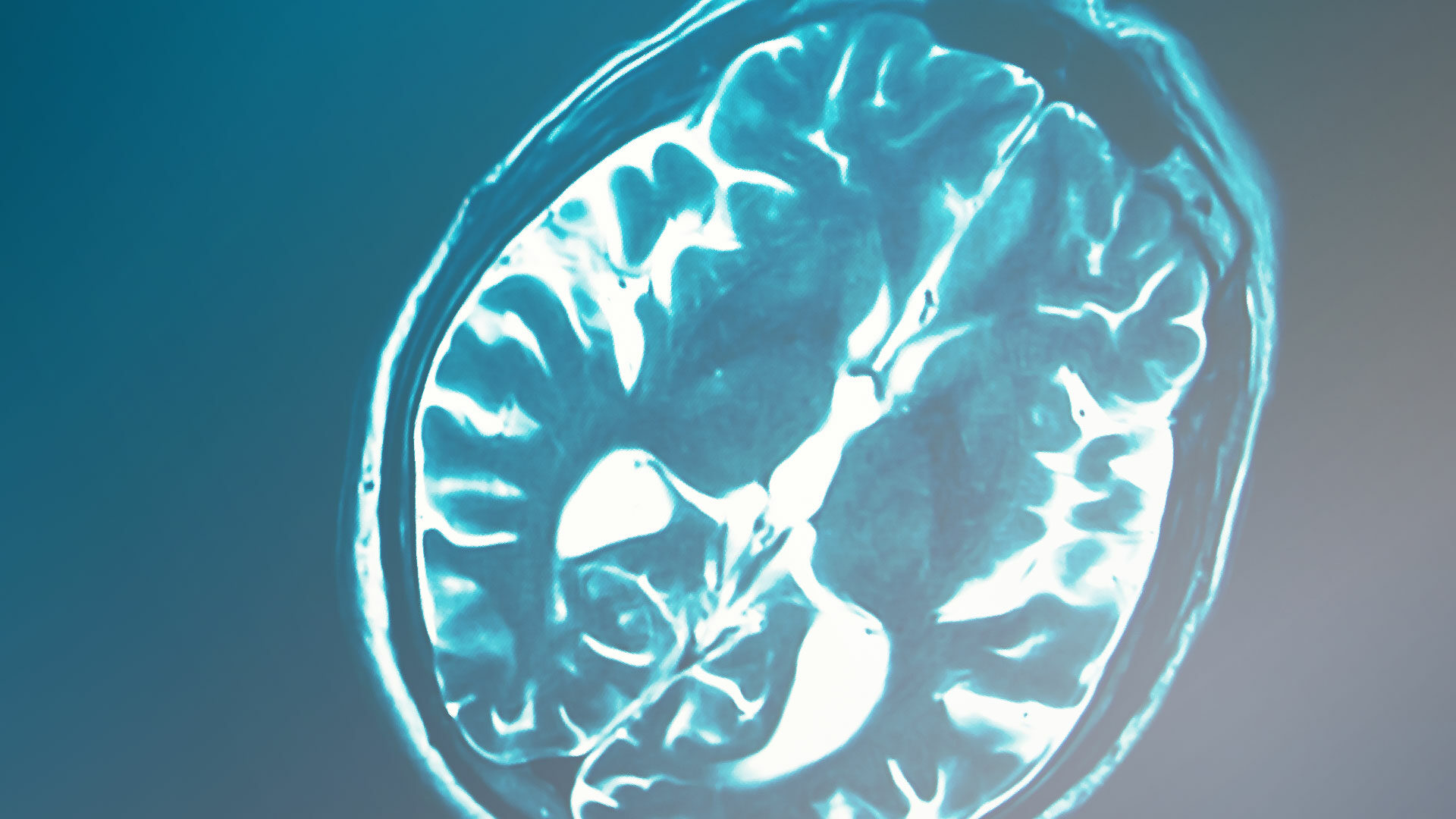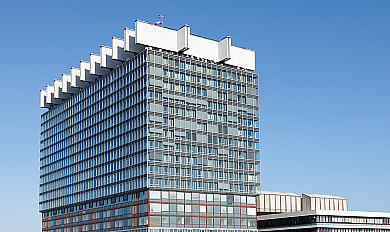Interview with Prof. Norbert Galldiks

What are your main areas of work/research at the University Hospital in Cologne and at the Research Center in Jülich?
The focus of our working group is on clinical-translational research in the field of neuroimaging. A successful example is amino acid PET with the tracer 18-F fluoroethyltyrosine (FET). Through numerous publications with predominantly clinical questions, we have been able to contribute to the fact that this method has now achieved wide acceptance in the field of neuro-oncology. We are therefore regularly referred many patients to the Jülich Research Center for examination with FET PET. We examine patients with gliomas as well as with brain metastases.
At the Department of Neurology at the University Hospital in Cologne, I am in charge of the Neuro-Oncology Department and therefore have the opportunity to refer brain tumor patients to the Research Center Jülich for innovative, supplementary imaging procedures.
How did you get involved with PET in general and brain PET in particular?
I completed my specialist training at the Department of Neurology at the University Hospital in Cologne. There I was initially inspired by my clinical and scientific teachers. In particular, Prof. Heiss and Prof. Herholz should be mentioned here. Both have done significant research, which has led to the PET method being established nationally and internationally in the field of clinical neurological research.
Are there any special experiences or success stories that you would attribute to the use of PET in neuro-oncology?
A number of studies show that amino acid PET provides more information than standard MRI. Above all, the differentiation between a therapy-induced change that suggests tumor progression but is not present and actual tumor progression should be mentioned here. This important information then flows into clinical decision-making.
We regularly see examples in clinical routine where this important differential diagnosis
can be made with the help of amino acid PET. The early diagnosis of a therapy-indicated
change using amino acid PET can help a) to ensure that an effective therapy will be left in
place and b) that a therapy with potentially more side effects will be avoided.
A study was recently published by a group in the Netherlands showing that unnecessary costs and interventions can be avoided thanks to the use of PET scans. Based on your experience, can you confirm this and do you think there are cost savings thanks to PET diagnostics?
Absolutely. We have also been able to show this with FET PET in several studies, e.g. Heinzel et al., 2013, Heinzel et al., 2017, Rosen et al., 2022. Our work
was also confirmed by other working groups such as the group around Prof. Baguet von of the University Hospital Ghent in Belgium (Baguet et al., 2019).

Where do you see the benefits of brain PET in neuro-oncology?
In addition to the already mentioned differentiation between a therapy-induced change and an actual tumor progression, the determination of the extent of the glioma should also be mentioned. Certain gliomas do not show any contrast medium uptake – here amino acid PET can help to identify the tumor sections with the highest malignancy. These sections are often formed by so-called “hot spots”, which can then be used as a target structure for biopsy guidance, resection or radiation planning. With the help of serial or multi-stage amino acid PET (e.g. before the start of therapy and again during the course of therapy) statements can also be made about the therapy response. For example, the decline in metabolic tumor activity over time is indicative of a response to therapy. Initial work was also able to show that this was accompanied by a significant increase in survival.
Where do you currently see possible disadvantages of brain PET in neuro-oncology?
A disadvantage is certainly that the costs of amino acid PET are often not covered by statutory health insurance companies. However, it is expected that this will probably change in Germany in the foreseeable future (see provisional decision of the Federal Joint Committee of December 16, 2021). Compared to conventional MRI, amino acid PET is about twice as expensive and is not offered everywhere for brain tumor patients due to the fact that the costs have not yet been covered
What has to happen for PET to be used even more widely than it is today?
In addition to the constant publication of research results and the reimbursement by the statutory health insurance companies, it is important that there are guidelines for the uniform use of amino acid PET. These have recently been updated in cooperation with large European and US American professional societies (Law et al., 2019). It is also important in the training of doctors to pay more attention to the importance of modern neuroimaging.
A dedicated brain PET device is not yet available in Germany. Do you think such a device is necessary?
I think it has an added value because the device is very small and compact, so it has logistical advantages compared to a large full-body scanner. I also suspect that the device will be attractively priced and will be below the price of a full-body PET system.
Based on your first impression, what do you like best about NeuroLF?
I don’t know the device well and haven’t been able to test it yet. But as already mentioned, I see the main advantages in the compactness and the simplified logistics. This could also make the device interesting for neuro-centres, because the demand for PET tracers, e.g. for diagnosing Alzheimer’s disease, is likely to increase in the future, especially when effective therapies become available.
What trends do you see in Germany in relation to the use of PET in general and brain PET in particular?
In the case of extracranial tumors, the use of PET in prostate cancer is very widespread and established. One important method is “Theranostics”, with which prostate carcinomas can be diagnosed and treated directly at the same time. The early diagnosis of Alzheimer‘s disease, including its differential diagnoses, is another very important topic from a neurological point of view. Here tracers are used, which directly show pathological cerebral deposits (mainly amyloid, tau) in the context of the disease. PET imaging of somatostatin receptor expression in meningioma patients is also of great interest. Especially in the case of skull base meningiomas, important information about
the extent of the tumor can be collected here.
The Federal Joint Committee (G-BA) in Germany recently published an update of the ASV regulation, in which amino acid PET would be included in outpatient reimbursement for neuro-oncological questions, especially for FET. Do you see that this change could affect the procedures conducted in Germany?
Overall, this is a very pleasing development in Germany. I assume that this positive decision came about for various reasons:
- In recent years, numerous published research papers by various working groups have shown that amino acid PET has a clear additional diagnostic benefit
- There are guidelines that have been published in collaboration with the most important
European and US professional societies (Law et al., 2019) - Several consensus papers have been published by various experts from all disciplines
involved in the care of brain tumor patients, which have also highlighted the value of
amino acid PET
What would you personally like to achieve with your research and/or clinical work in the coming years?
Many PET studies originate from a single, mostly university center and often have a retrospective character. I would therefore like to work more on prospective multicenter studies in the future or help to initiate them. The use of amino acid PET for therapy monitoring of innovative therapy approaches, e.g. from the field of immunotherapy, is also of great clinical interest. Last but not least, it would be exciting if more imaging findings could be spatially correlated with neuropathological findings or if other innovative diagnostic methods could be combined.
Prof. Norbert Galldiks
Dr. Norbert Galldiks is a specialist in neurology and university professor for translational imaging in neuro-oncology at the medical faculty of the University of Cologne. He is also a senior physician at the Department of Neurology at the University Hospital in Cologne, where he is responsible for the area of neuro-oncology. He is a working group leader at the Institute for Neuroscience and Medicine (INM-3) at the Forschungszentrum Jülich. Together with colleagues from the Center for Neurosurgery, he continues to lead the brain tumor center at the University Hospital in Cologne. On an international level, he leads the PET Response Assessment in Neuro-Oncology (PET/RANO) Working Group.
He developed numerous neuroimaging studies in brain tumor patients and participated in several national and international phase 2 and 3 clinical studies on brain tumor therapy. In addition, he was co-author of guidelines that were created in cooperation with the relevant specialist societies for PET imaging and the clinical management of patients with brain metastases (especially RANO, EANO, EANM, ESMO, ESTRO, SNMMI). He is also Associate Editor for the journals Neurooncology Advances and Neurooncology Practice.
Dr. Galldiks has more than 280 publications focusing on the evaluation of gliomas and brain metastases using PET, MRI, HybridPET/MRI and radiomics techniques, according to the Web of Science.
